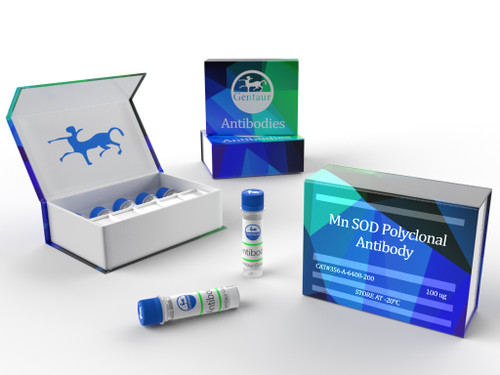Product Description
SOD Protein is available at Gentaur for Next week delivery.
Description: Human Recombinant Superoxide dismutase Protein Preformed Fibrils
Alternative Name(s): Superoxide dismutase1 Protein, ALS1 Protein , SOD1 Protein, IPOA Protein
Research Area(s): Cancer | Oxidative Stress | Cell Signaling | Protein Trafficking | Chaperone Proteins
Nature: Recombinant
Accession Number: NP_000445.1
Gene ID: 6647
Swiss-Prot: P00441
Applications Species: WB | SDS-PAGE | In vivo assay | In vitro assay
Biological Activity:
Expression System: E. coli
Protein Length: Full length
Amino Acid Sequence:
Purification: Ion-exchange Purified
Storage Buffer: PB pH 7.4, 5 mM EDTA, 50 mM DTT
Concentration: Lot/batch specific. See included datasheet.
Shipping Temperature: Dry Ice. Shipping note: Product will be shipped separately from other products purchased in the same order.
Other relevant information:
Certificate of Analysis: Certified >95% pure using SDS-PAGE analysis.
Cellular Localization: Nucleus | Mitochondrion | Cytoplasm
Scientific Background: Superoxide dismutase (SOD) is an endogenously produced intracellular enzyme present in almost every cell in the body (3). It works by catalyzing the dismutation of the superoxide radical O2ˉ to O2 and H2O2, which are then metabolized to H2O and O2 by catalase and glutathione peroxidase (2,5). In general, SODs play a major role in antioxidant defense mechanisms (4). There are two main types of SOD in mammalian cells. One form (SOD1) contains Cu and Zn ions as a homodimer and exists in the cytoplasm. The two subunits of 16 kDa each are linked by two cysteines forming an intra-subunit disulphide bridge (3). The second form (SOD2) is a manganese containing enzyme and resides in the mitochondrial matrix. It is a homotetramer of 80 kDa. The third form (SOD3 or EC-SOD) is like SOD1 in that it contains Cu and Zn ions, however it is distinct in that it is a homotetramer, with a mass of 30 kDA and it exists only in the extra-cellular space (7). SOD3 can also be distinguished by its heparin-binding capacity (1). Studies have shown that in vitro, Cu-Zn SOD (SOD1) fibrils are transduced into cells and function as seeds to trigger the aggregation of endogenously expressed SOD1 (9).
References: 1. Adachi T., et al. (1992). Clin. Chim. Acta. 212: 89-102. 2. Barrister J.V., et al. (1987). Crit. Rev. Biochem. 22:111-180. 3. Furukawa Y., O'Halloran T. (2006). Antioxidants & Redo Signaling. Vol 8, No 5,6. 4. Gao B., et al. (2003). Am J Physiol Lung Cell Mol Physiol 284: L917-L925. 5. Hassan H.M. (1988). Free Radical Biol. Med. 5: 377-385. 6. Kurobe N., et al. (1990) Biomedical Research. 11: 187-194 7. Wispe J.R., et al. (1989) BBA. 994: 30-36. 8. Xiao-Hong Liu., et al. (1993) Brain Research. 625: 29-37. 9. Furukawa Y., et al. (2013) FEBS 587(16): 2500-2505.
Field of Use: Not for use in humans. Not for use in diagnostics or therapeutics. For research use only.
PubMed ID:
Published Application:
Published Species Reactivity:
" Euro
Euro
 British Pound
British Pound
 US Dollar
US Dollar




















